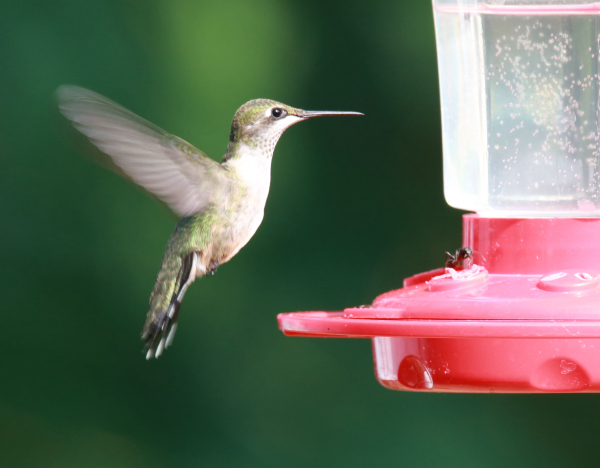U.S. Fish and Wildlife Service Protects Rare Hummingbird under the Endangered Species Act

The U.S. Fish and Wildlife Service will list the rare Honduran emerald as endangered under the Endangered Species Act (ESA). Measuring less than four inches in length and the only bird species endemic to Honduras, this hummingbird is in decline due to degradation, fragmentation, and loss of its dry thorn forest habitat as a result of cattle grazing and agriculture.
The Service finds as a result of its review of the best scientific and commercial information available, the Honduran emerald is at risk of extinction throughout its range – the definition of an endangered species – and in need of protection.
An estimated 5,000 to 10,000 breeding pairs of the birds remain, located in small, isolated valleys within the country. With 90 percent of the birds’ habitat now lost, and with remaining habitat degraded and fragmented, the hummingbirds must expend more energy in search of food and suitable breeding and nesting sites. This additional energy expenditure may affect the reproductive success of the species.
Certain activities involving the Honduran emerald will be prohibited without a permit, including import into and export out of the United States, “take” (defined by the ESA as harm, harass, kill, injure, etc.) within the United States, and interstate and foreign commerce. By regulating these activities, the ESA ensures that people under the jurisdiction of the United States do not contribute to the further decline of the species.
Permits will be issued for these activities only for scientific purposes that benefit the species in the wild, or to enhance the propagation or survival of the species, including habitat restoration and research.
In addition to the protective listing under the ESA, the Service has also helped conserve Honduran emeralds through the Neotropical Migratory Bird Conservation Act. Grants for projects in Honduras have benefitted this hummingbird through habitat conservation for neotropical migrants that share the same forested habitat in parts of northern Honduras.
The final rule will publish in the Federal Register on July 29, 2015, and will go into effect 30 days after publication on August 28, 2015, and also will be available at www.fws.gov/policy/frsystem/default.cfm by clicking on the 2015 Notices link under Endangered and Threatened Wildlife and Plants.
The ESA provides a critical safety net for fish, wildlife and plants and has prevented the extinction of hundreds of imperiled species, as well as promoting the recovery of many others. The Service is actively engaged with conservation partners and the public in the search for improved and innovative ways to conserve and recover imperiled species.
To learn more about the Endangered Species program’s Branch of Foreign Species, visit: http://www.fws.gov/endangered/what-we-do/international-activities.html.






